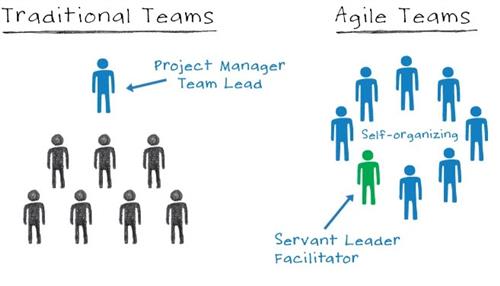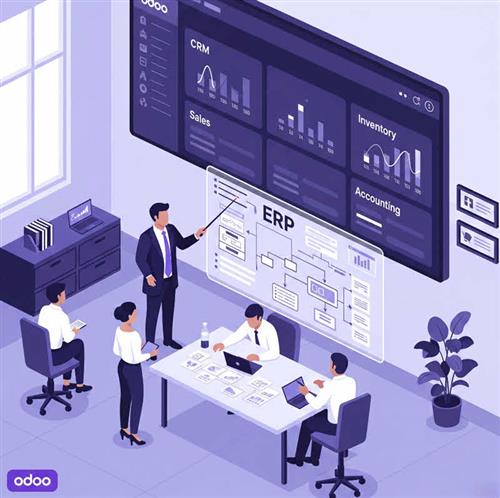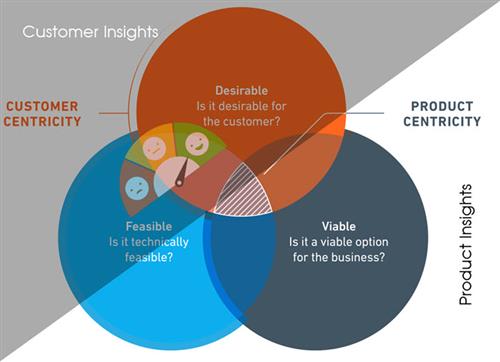
XERO vs ODOO: Which fits your needs?
Last updated: November 08, 2022 Read in fullscreen view
- 21 Apr 2021
 Most frequently asked questions about Odoo ERP 16/1175
Most frequently asked questions about Odoo ERP 16/1175 - 10 Aug 2021
 Build A Marketplace Website with Odoo ecommerce 10/730
Build A Marketplace Website with Odoo ecommerce 10/730 - 20 Oct 2022
 Odoo roadmap for beginners and small businesses 9/1018
Odoo roadmap for beginners and small businesses 9/1018 - 10 Aug 2024
 Odoo vs. Lark: A Comprehensive Comparison 7/683
Odoo vs. Lark: A Comprehensive Comparison 7/683 - 01 Jan 2023
 Senior Odoo Business Developer - Job Detail 6/513
Senior Odoo Business Developer - Job Detail 6/513 - 20 Jan 2022
 TIGO Self-Organization Practice: Change Management Workflow 6/430
TIGO Self-Organization Practice: Change Management Workflow 6/430 - 16 Jun 2022
 Rapid Application Development (RAD): Pros and Cons 5/800
Rapid Application Development (RAD): Pros and Cons 5/800 - 08 Aug 2022
 Scale-up! The ultimate business game to learn business operations before you get started 5/521
Scale-up! The ultimate business game to learn business operations before you get started 5/521 - 01 Nov 2023
 Unlocking the power of Odoo 17 - What are the new and improved features? 5/328
Unlocking the power of Odoo 17 - What are the new and improved features? 5/328 - 01 Apr 2025
 How to Manage Social Media Marketing with Odoo 5/104
How to Manage Social Media Marketing with Odoo 5/104 - 03 Dec 2024
 CRM Solutions on the Odoo Platform 4/17
CRM Solutions on the Odoo Platform 4/17 - 01 Jan 2024
 The pros and cons of the Centralized Enterprise Automation Operating model 4/165
The pros and cons of the Centralized Enterprise Automation Operating model 4/165 - 10 Apr 2022
 Odoo Dealership Management 4/522
Odoo Dealership Management 4/522 - 14 Dec 2021
 Odoo - the Right Software for Your Digital Transformation? 4/390
Odoo - the Right Software for Your Digital Transformation? 4/390 - 08 Nov 2022
 Considerations in revolutionizing your business with Odoo 3/250
Considerations in revolutionizing your business with Odoo 3/250 - 20 Jan 2021
 Fail early, fail often, fail cheap, fail safe but always fail forward 3/688
Fail early, fail often, fail cheap, fail safe but always fail forward 3/688 - 12 Oct 2022
 Why is ODOO end-to-end business management software? 3/305
Why is ODOO end-to-end business management software? 3/305 - 29 Nov 2019
 Odoo Website Builder Allows You to Make Your Own Website 3/673
Odoo Website Builder Allows You to Make Your Own Website 3/673 - 23 Aug 2022
 How to Create Qweb Report in Odoo 16? 3/808
How to Create Qweb Report in Odoo 16? 3/808 - 18 May 2022
 Odoo Employee Contract Portal Self Service 3/617
Odoo Employee Contract Portal Self Service 3/617 - 10 Feb 2022
 Odoo Implementation Services - Let Us Be the Icing 3/343
Odoo Implementation Services - Let Us Be the Icing 3/343 - 10 Feb 2022
 Odoo Implementation - Basics of the QuickStart Methodology 2/406
Odoo Implementation - Basics of the QuickStart Methodology 2/406 - 02 Dec 2022
 Success Story: Satsuki - Sales Management Software, back office app for School Subscription Management 2/219
Success Story: Satsuki - Sales Management Software, back office app for School Subscription Management 2/219 - 09 Apr 2025
 Odoo Migration Best Practices: A Complete Guide to Upgrading Your ERP System 2/48
Odoo Migration Best Practices: A Complete Guide to Upgrading Your ERP System 2/48 - 19 Apr 2023
 A Deep Dive into Odoo: Benefits, Drawbacks, Strategic Fit, and Investment Models 2/205
A Deep Dive into Odoo: Benefits, Drawbacks, Strategic Fit, and Investment Models 2/205 - 11 Nov 2021
 What is an IT Self-service Portal? Why is it Important to Your Business? 2/364
What is an IT Self-service Portal? Why is it Important to Your Business? 2/364 - 02 Nov 2021
 [Case Study] Streamlined Data Reporting using Tableau 2/276
[Case Study] Streamlined Data Reporting using Tableau 2/276 - 09 Nov 2021
 Frequently Asked Questions about Odoo 2/381
Frequently Asked Questions about Odoo 2/381 - 09 Apr 2022
 Comparing Features for Odoo ERP with ERPNext 2/229
Comparing Features for Odoo ERP with ERPNext 2/229 - 03 Nov 2021
 7 phases of Odoo Implementation and Development: Can they be outsourced? 2/357
7 phases of Odoo Implementation and Development: Can they be outsourced? 2/357 - 17 Feb 2022
 10 services of Odoo Development for streamlining your business 2/382
10 services of Odoo Development for streamlining your business 2/382 - 16 Mar 2022
 Digital Transformation With Odoo: an ERP made for you as SME and grow with you? 1/154
Digital Transformation With Odoo: an ERP made for you as SME and grow with you? 1/154 - 19 Oct 2021
 The Workplace of the Future: Gamification to Encourage and Reward Employees 1/285
The Workplace of the Future: Gamification to Encourage and Reward Employees 1/285 - 13 Feb 2021
 Why is TIGOSOFT a software house for Enterprise Application Development? 1/336
Why is TIGOSOFT a software house for Enterprise Application Development? 1/336 - 03 Apr 2021
 How digital asset management streamlines your content workflow? 1/312
How digital asset management streamlines your content workflow? 1/312 - 19 Sep 2022
 Comparison between Odoo and SAP: It doesn't matter whether a cat is black or white, as long as it catches mice 1/176
Comparison between Odoo and SAP: It doesn't matter whether a cat is black or white, as long as it catches mice 1/176 - 18 Mar 2025
 Odoo HRMS Software for Efficient HR Management in Dubai Businesses 1/100
Odoo HRMS Software for Efficient HR Management in Dubai Businesses 1/100 - 15 Jul 2025
 Steps to Successful Odoo Implementation 1/81
Steps to Successful Odoo Implementation 1/81 - 04 Apr 2023
 Odoo: A Re-Birth for Enterprise Software 1/137
Odoo: A Re-Birth for Enterprise Software 1/137 - 02 Sep 2024
 Toolzoon Review: Features, Benefits, and Essential Tools for Enhanced Productivity 1/180
Toolzoon Review: Features, Benefits, and Essential Tools for Enhanced Productivity 1/180 - 01 Jan 2024
 Odoo: The Small Business Game-Changer — Cost Savings and Enhanced Productivity 1/83
Odoo: The Small Business Game-Changer — Cost Savings and Enhanced Productivity 1/83 - 01 Feb 2024
 Employee Attendance Using Camer AI /143
Employee Attendance Using Camer AI /143 - 01 Mar 2024
 Odoo Ecosystem - ALL-IN-ONE BUSINESS MANAGEMENT SOFTWARE /178
Odoo Ecosystem - ALL-IN-ONE BUSINESS MANAGEMENT SOFTWARE /178 - 07 Feb 2023
 Odoo Consulting Services in Vietnam /227
Odoo Consulting Services in Vietnam /227 - 06 Nov 2023
 How do you streamline requirement analysis and modeling? /184
How do you streamline requirement analysis and modeling? /184 - 19 Jan 2022
 TIGODOO - The leading player in the digital transformation market /335
TIGODOO - The leading player in the digital transformation market /335 - 02 Oct 2022
 Odoo: The Disruptor of Traditional ERP in the Age of AI and Blockchain /252
Odoo: The Disruptor of Traditional ERP in the Age of AI and Blockchain /252 - 21 Oct 2024
 Simplify Your Workflow with an AI Summary Generator /101
Simplify Your Workflow with an AI Summary Generator /101 - 03 Apr 2023
 Odoo ERP - "Swiss army knife" approach for all business solutions /148
Odoo ERP - "Swiss army knife" approach for all business solutions /148 - 08 Aug 2022
 Why is Odoo growing faster than other ERP software systems? /184
Why is Odoo growing faster than other ERP software systems? /184 - 11 Sep 2022
 Odoo - a product-market fit for a radical and meaningful transformation of SMEs in Japan /276
Odoo - a product-market fit for a radical and meaningful transformation of SMEs in Japan /276 - 25 Jul 2022
 Govern your Business with Odoo - One Solution To Many Challenges /253
Govern your Business with Odoo - One Solution To Many Challenges /253 - 01 Oct 2022
 Odoo 16 will Disrupt The ERP Mid-Market with stunning features /326
Odoo 16 will Disrupt The ERP Mid-Market with stunning features /326 - 03 Sep 2022
 The secret of software success: Simplicity is the ultimate sophistication /186
The secret of software success: Simplicity is the ultimate sophistication /186 - 21 Jun 2021
 6 Useful Tips To Streamline Business Processes and Workflows /515
6 Useful Tips To Streamline Business Processes and Workflows /515 - 25 Dec 2021
 Compare Odoo Studio vs QuickBase vs OutSystems /479
Compare Odoo Studio vs QuickBase vs OutSystems /479 - 18 Mar 2020
 Automate Recruitment with Odoo: Work smarter, not harder /299
Automate Recruitment with Odoo: Work smarter, not harder /299 - 08 Nov 2021
 Why Odoo is considered best for streamlining your business? /246
Why Odoo is considered best for streamlining your business? /246 - 07 Nov 2022
 The Future of Odoo Consulting /237
The Future of Odoo Consulting /237
Outsource Accounting involves an application software that reads and manages all their accounts. The market is full of these kinds of accounting software, each one having their own specific kinda of features. Some are available free, some are by subscription. But choosing which one will be best suitable for your business is the real task.
We narrows that path for you and is here with two best of their kinds of softwares; Odoo and Xero and their brief comparison.
1. A detailed comparison of leading Accounting software for SMEs
Both Xero and Odoo are amazing accounting platforms. Sometimes, the question we advise customers to ask is not about which is better than which, but about which is more suitable for their businesses.
As we are in the business of creating the best software extensions for our customers, we would like to provide you with more insights on whether Xero or Odoo works best for your online store. If you are still unclear on what to choose, please read through this article. Do feel free to contact us any time through our e-mail below if you still have questions.
1.1. About Xero
Xero is an online based accounting software. It manages your cashflow, schedule payments, invoices, account payable etc. in real time. It also tracks your sales and purchase.
1.2. About Odoo
Odoo is a management software that provides you with a complete package of applications that is needed in a business. Like from managing accounts and invoices to managing customers relations, making websites, managing e-mails etc.
- Features they provide: Xero allows you manage your cash flow. It schedule payments and organise your expenses. It generates online invoices and keeps a track of it.
Odoo helps your create and manage your e-commerce website. It manages your bills, invoices and accounts. Keeps an eye on manufacturing and inventory department. - Suitability: Odoo is a management software that has wide range of applications, whereas Xero is an accounting software. The size of the firm is what matters most. More the complexity business involves, more it need a high-end management. So, Odoo is best suitable for companies and big firms and Xero is suitable for small and medium scale enterprises.
- Compatibility with other applications: Xero integrates your accounts with more than 700+ third party business applications easily. On the other hand, Odoo has its own range of applications for business management for different purposes.
- Ties with the bank: Xero and Odoo, both the software integrate and reconcile your bank transactions to. It helps them to make payments timely and avoid double payments.
- Customer Relationship Management: Odoo has this feature of CRM i.e. Customer Relationship Management. it helps the company to build and run a smooth relationship with their clients and customers. It integrates the services provided by the company. Being an accounting software only, Xero does not provide you with this feature.
3. Xero vs Odoo: A Brief Comparision
In general, if we look at numbers, we can clearly see the number of subscribers of Odoo nearly triples that one of Xero (Over 2 million vs just 700,000). Not only that, Odoo’s total number of apps makes Xero’s number of add-ons modestly disappointing (7,300 apps vs 400+ add-ons). But Xero has an edge in terms of partners. Xero’s 16,000 partners are still a testament to its popularity. In contrast, Odoo, being an open source software and utilized in over 120 countries, has just merely 730 partners.
As mentioned previously, Odoo is an open source software. In contrast, the developers of Xero decided that it should only be available through SaaS (software as a service) offer. In scope, we can also observe that Odoo offers more than just accounting like Xero. Odoo’s large user base is also the result of its array of applications, in addition to its open source nature. You can view Odoo as something like an Apple iMac: All-in-one, covers everything from website/e-Commerce, billing, accounting, manufacturing, warehouse to and project management, and inventory. Meanwhile, Xero resembles an IBM supercomputer intended to run a specific purpose, in this case, strictly accounting.
When you visit our online store and look for an accounting solution for your marketplace, these details may be the first for you to bear in mind before purchasing our Xero or Odoo extensions.
3. Xero vs Odoo: In Specific Details
Now that we have an overall understanding of what these two platforms are, let’s take a closer look at features: how they work and what they cover. Remember that do not take any single comparison factor as a means to make your choice. Every factor can be interdependent, so it’s best if you understand thoroughly well what your business needs the most before deciding.
3.1. Xero vs Odoo: Pricing
If it’s just about accounting, Odoo can be a better starting choice for startups because its accounting app is free, albeit with no support. Xero on the other hand offers users with a Standard $30/month package that includes everything: free trial, free updates, maintenance and full support. This cost can vary however, as you may find yourself in need of another currency, in which case the price might go up. In addition, Xero only offers 6-month contracts, while Odoo does not provide any information about contract duration. Xero also provides users with the option of a free 30-day trial, and offers a starter pack at just $9/month.
Nevertheless, Xero’s monthly $30 price can actually be more viable in the long run, since follow-up support is always necessary. Odoo’s support options are pretty much limited, as you need to purchase other apps alongside the accounting one to receive further support. Furthermore, each app in Odoo has its own individual pricing. Bear in mind, though, that Odoo also charges $25 per user (Enterprise package). While this seems appealing to some, they still need to pay for other apps to get general support for all. So in terms of pricing, it really boils down to whether you are aiming for short-term or long-term cost, just accounting alone or all-in-one. For short-term and all-in-one management, Odoo is better. For long-term accounting, Xero is better (Remember, we are only talking about price here).
3.2. Xero vs Odoo: Features
The Xero vs Odoo argument can have some sense of consensus here, at last. Before you can decide which software to integrate into your marketplace, dig into what features do both these platforms share, what features that are missing from one but not the other, etc. Since both platforms have a lot of features in common, in this part we will give you information on the ones that Xero has but Odoo doesn’t, and vice versa:
Xero-unique features:
- Contact History.
- Customizable Reporting.
- Document Storage.
- Drag & Drop Interface, E-mail Integration.
- Goal Setting/Tracking.
- Mobile Integration.
- Receiving.
Odoo-unique features:
- Activity Tracking.
- Automatic Notifications.
- Custom Fields.
- Opportunity Management.
- Pipeline Management.
- Pipeline Reports.
- Sales Forecasting.
- Task Scheduling.
These are the features that distinguish Xero from Odoo. For other features, both platforms offer the same and possess the same. Each feature can affect original Standard package pricing of both Xero and Odoo, however (as mentioned earlier). For instance, if Xero users need to utilize the multi-currency feature, the cost can go up to $70 a month. Meanwhile, the original $25/user price of Odoo can also fluctuate depending on how many apps and features users use.
Basically speaking, both Xero and Odoo offer amazing common features to all your accounting needs, but the above unique features are the catch to help you pick either of them (and the price, too!). Do not expect everything to be free but with good quality, however.
3.3. Xero vs Odoo: User Interface (UI) and supported platforms
Xero vs Odoo ties here. Both platforms have a robust, good-looking website with smooth animations, albeit different themes. Xero uses a predominantly light blue color scheme, while Odoo UI seems to be more colorful with the primary scheme being purple. All functionalities are easily accessible on the web, as well as on mobile apps.
Choosing which over which at this point largely depends on each person’s aesthetic taste, in addition to price and features. Example: Xero’s dashboard seems to be more traditionally laid out, while Odoo’s dashboard resembles sticky notes on your desktop screen. Or Odoo’s home screen on mobile devices looks like typical home screens of most operating systems, while Xero’s home screen has a straightforward layout that can be more familiar to some. Pick your favorite.
In terms of supported platforms, Xero supports more than Odoo does. Both are available on the web and on Android-based mobile devices, but Xero is also available on iOS-based devices as well. This makes Xero friendlier towards more hardcore Apple fans, yet, able to satisfy Android fans at the same time. So, Xero fairly wins in this aspect. We are still trying to grasp Odoo’s decision to not support iOS devices, but it seems they finally realized the importance of this platform and released an app on iTunes at last near the end of 2016.
Both Xero and Odoo is still not supporting Windows Phones, though. Maybe someday, who knows?
3.4. Xero vs Odoo: Other factors to consider
One interesting fact is that Xero integrates well with other applications such as PayPal, MailChimp, Zapier, Workato, and so on. The number of applications and platforms that can be integrated with Xero (including Magento and Magento 2) reaches 463. In stark contrast, there are only 5 Odoo’s integrations into other applications/platforms so far, Magento 2 included. We will get to the bottom of this soon, but obviously Xero wins again in this one.
Oddly enough, despite offering free accounting app for companies, Odoo’s user base are primarily large enterprises, each with 201-1000 employees. Xero’s most popular users are entry-level startups with dozens of employees, or SMEs. There is an explanation for this, however. Odoo’s nature as an open source, all-in-one management software makes it more convenient for larger firms to handle multitasking. Xero on the other hand seems to be the essential cost-effective accounting tool for startups, but cannot fulfill other purposes. In the perspective of a large company, having Odoo can be more beneficial because of its versatility. Why so? If they pick Xero for accounting purposes then they will need to purchase other apps to integrate into their online stores. Hence, Odoo wins here.
4. Conclusion
Company opting for accounting software must consider some of these factors like size of the firm, nature of the company, before choosing any software for their business. Accounting software is available either installed locally or through a cloud service provider. While both types of software have their own unique advantages, online offers are becoming increasingly popular choices amongst small and medium size businesses (SMBs) given the simplicity and low cost of implementation.
Xero is a great application for one function: accounting. Xero may be a good choice for SMEs and startups with a simple business model where there are few products and where inventory does not need to be tracked.
However, the choice of accounting software is a key aspect of every business strategy. If you manage inventory in your business, and if you want the flexibility to grow your product list and expand your supply chain, while managing stock levels accurately, then Odoo would be the better long-term choice. Start with the right tools to manage inventory, and reap the benefits of having the accurate information to make confident decisions.











![Best IT Outsourcing Companies in Vietnam with Reviews 2023 Top 10 Vietnam IT Outsourcing Vendors [MOST UPDATED] - TIGO CONSULTING](/Uploads/Vietnam12012023111455_thumb.jpg)























 Link copied!
Link copied!
 Recently Updated News
Recently Updated News